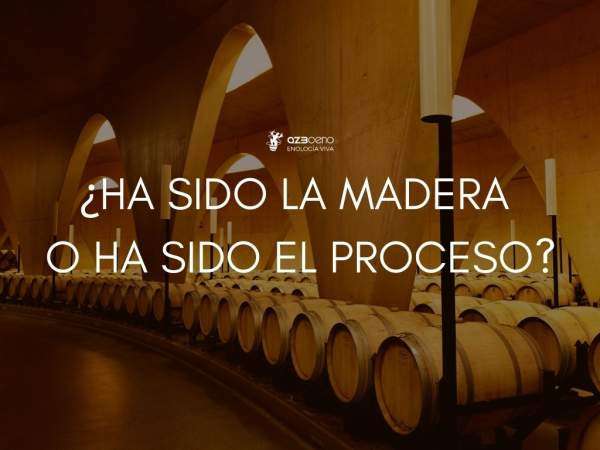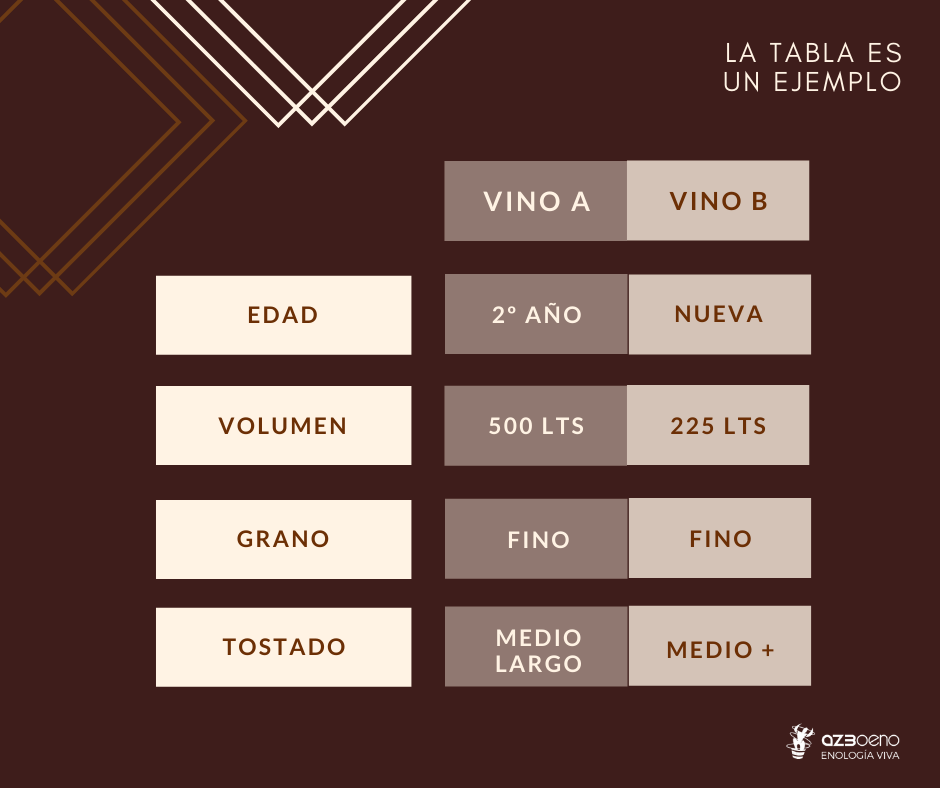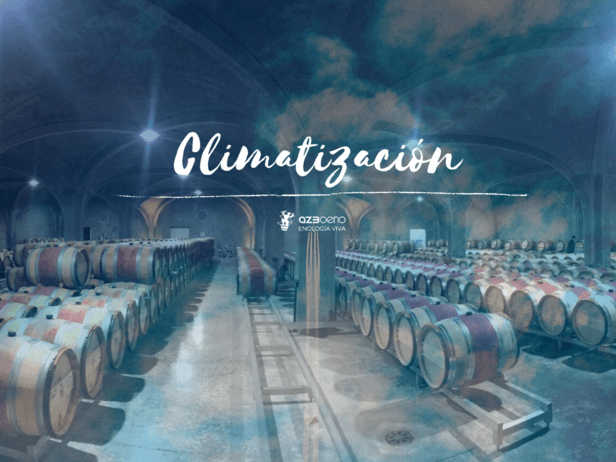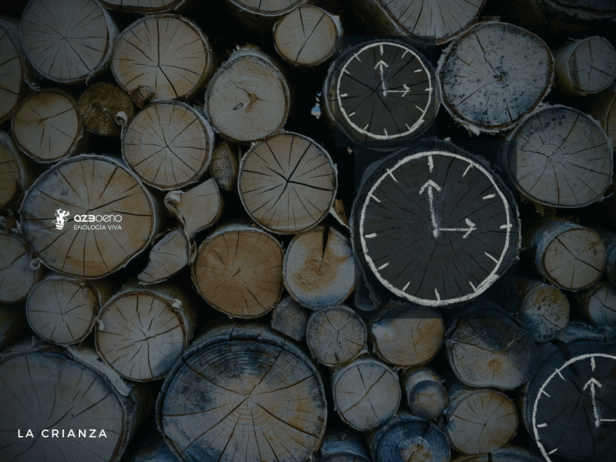
Today, we are thinking about one of the most important stages of production: the aging of the wine.
We generally think that with a good base and a good choice of barrel the result is guaranteed. And, while it is true that both are key aspects, are they sufficient to guarantee the result we want?
Let’s go deeper and imagine that in a tank we have a wine with a fresh and fruity profile and a high concentration, with a balanced A/T ratio, and we put it in two types of barrels to analyze its behavior:

After three months, in the first follow-up tasting, we find the following:
- Wine A maintains an intensity of fruit, notes of patisseries and spices appear. The tannin, which still needs to be polished, is structuring.
- Wine B is more closed, with a high impact from the wood that masks the fruit. In the mouth, the tannin is more pronounced, giving way to some dryness. The color is slightly evolved.
In addition, when analyzing the SO2 we see that in wine A it has barely changed, while in wine B, the drop has been considerable. But why is that?
The first thing we would think is that these differences could be explained by having used different barrel models. Obviously, when dealing with different formats, toasting and age, there is a direct impact on the wine's profile, but there is more to consider; let's see:
- Filling: Wine A was filled by gravity. This involved working the movement of the wine in laminar regime, with hardly any contribution of O2 nor its consequent lowering of So2m by combination. Wine B was the end of the tank so the level no longer allowed filling to continue in this way and a pump was used that worked at more than 1.5 m/s (turbulent regime), adding O2 in an uncontrolled way, which resulted in a drop in SO2from the first day of aging: wine less protected.
- Climate control: The barrels for wine A were left in an area of the barrel warehouse at one height, while the others were stacked at 5 levels in an area where the climate control system is not as effective. In this area, the humidity and temperature are not well controlled and were not kept in ideal conditions, which, together with the fact that it is a new barrel, resulted in the wine level dropping to 5 cm. In the 500l barrels just under 1cm or, in other words, in the 500l barrel a contact surface of about 220 cm<sup>2</sup> and a gap of 0.5l have been generated, while in 225l barrels the surface area is 10 times greater and the gap is 4l.
- The levels of O2d: As a result of the previous point, we have an increase in O2d which supposes an oxidation of the anthocyanins, which end up precipitating. The A/T ratio falls and as a consequence we have higher polymerization between tannins, and therefore an increase in dryness and color evolution towards orange tones.
- Microbiological contaminations: Increasing levels of O2d and decreasing SO2m make wine B less protected and increases the risk of microbiological contamination. Larger populations of harmful microorganisms, such as Brett, before showing their activity in the form of 4-ethyl phenol and 4-ethylguaiacol above the thresholds of perception, cause a decrease in aromatic intensity.
- Turbidity: The fraction of wine A corresponds to the cleanest part, while wine B had a higher turbidity as it was the end of the tank. This fact led to a greater consumption of oxygen by the lees, which resulted in a marked reduction in wine B.
After three months we have, in one case, a wine with a reducing and fresh profile and, on the other, an evolved wine with loss of fruit and dryness. Was it the wood or was it the process?
We must understand aging as the intelligent and well-defined management of the molding of the wine to turn it into a great wine.
Related news
Climate control
Take any treatise on oenology that you have on the shelf in your office. Practically all of them contain a specific chapter that tells us the optimal environmental conditions that we must ensure in the different areas of the winery so that the storage or aging of our wines is ideal.
How can you save money and preserve the fruit?
NURTURE, produce, feed and educate a living entity until its full development.

